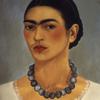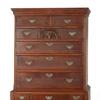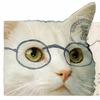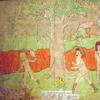HERNING MUSEUM OF CONTEMPORARY ART OPENS FIFTH SOCLE DU MONDE BIENNALE
- HERNING, Denmark
- /
- November 09, 2010
THE SOCLE DU MONDE BIENNALE “BETWEEN CULTURES” HEART’S FIFTH EDITION OF A ‘SUSTAINABLE’ BIENNALE.
HEART, Herning Museum of Contemporary Art, announces the 5th edition of the Socle du Monde Biennale which will run from November 6, 2010 until March 13, 2011. The 2010 Biennale entitled, Between Cultures, is curated by Holger Reenberg, director of HEART, and will include works from Jannis Kounellis, Ismar Cirkinagic, Lilibeth Cuenca Rasmussen, Jens Haaning, Nedko Solakov, Kimsooja, Danh Vo, Hesselholdt & Mejlvang, Christian Danielewitz, Jette Hye Jin Mortensen, Thierry Geoffroy, Joachim Hamou and Marcelo Viguez. True to the Socle du Monde Biennale’s history and raison d’être, the creation of the works has been made possible through a cooperation with business, educational bodies and public institutions whose support reaches out far beyond just financial means. Parallel to the 2010 Biennale cycle, HEART will not only show works created from earlier Biennales but also mount Shit or Gold?, a study and presentation of the impact of Mazoni’s art with special attention focused on his Merda d’artista and the debates that have surrounded the work since 1961. Sideshow, an exhibition which presents works from previous Socle du Monde Biennales will also be on view.
Created before the term became fashionable, the Socle du Monde Biennale is sustainable almost by default, as it grew out of the avant-garde corporate philanthropic endeavor set up in the 1960’s by Aage Damgaard, a Danish entrepreneur in Herning. Fascinated by the arts and intrigued by its creators and mechanisms, Damgaard invited artists to Denmark where he provided them with a salary, space and time to work. Over the years, Piero Manzoni, Robert Jacobsen, Sven Dalsgaard, Svend Wiig Hansen and Paul Gadegaard were amongst the ones who found a temporary ‘room of their own’ at Damgaard’s factory. An extrapolation of Damgaard’s highly enlightened and inspired model, the Socle du Monde Biennale is made possible by a series of companies who each cooperate with the artists through a commitment which is not only financial in nature but can also include logistical, intellectual and emotional support of the creation of the works by the selected Biennale artists.
Of all artists, Manzoni undoubtedly was the one most intertwined with the Damgaard project. Not only did he so much enjoy his encounter with Damgaard and his stay at the factory that he proclaimed the place to be his ‘Paradise’, he also created 41 works which later became the core of the Herning Museum collection. It is at the heart of this HEART group that the enigmatic Socle du Monde resides.
A first encounter with Socle du Monde – Hommage à Galileo (1961), a bronze base with an upside-down text inscription, may evoke slight bewilderment. As soon as its meaning and function have become clear however, the ensuing poetry and symbolism are so intense that one has to marvel at Manzoni’s unique views, both on the world as well as on artist-hood. The Socle is indeed a pedestal which the artist created to signify that the world, with all on it and of it, is a work of art and should be displayed as such. By the same token it also represents a massive hint at the obsoleteness of the artist.
It is clear that Socle du Monde, as presented by HEART today possesses two meanings. It is quintessentially Manzoni’s homage not only to Galileo but also to Damgaard whose efforts to combine arts and industry he much admired, it has also given its name to the Biennale organized by HEART, which serves as a strong and invigorating example of workable and successful creative/corporate partnerships. The pairing of ‘real world money’ with ‘extra-ordinary imagination’ not only enables relatively unknown artists to make their mark and become part of a large scale exhibition schedule, it also provides the local community surrounding the participating companies with a strong sense of commitment and citizenship. Ultimately, the Socle du Monde Biennale could very well become an ever more encouraging lightening beacon in these twilight days of shrinking public spending and support for the arts.
Socle du Monde Biennale
November 6, 2010 through March 13, 2011
Herning Museum of Contemporary art
Birk Centerpark 8
DK – 7400 Herning
Denmark
###
For press enquiries and images, please contact:
Brunswick Arts
Julia Niebuhr on +49 30 20 67 33 68 or jniebuhr@brunswickgroup.com
HEART
Lene Elsner on +45 96 281 704 or le@heartmus.com
Lars Schäfer on + 45 96 281 705 or ls@brunswickgroup.com
Images will be available for download on http://www.socledumonde.dk/Logo-etc.-3540.aspx
As the project proceeds, more images will be uploaded on this server.
A press vernissage will take place at HEART in the presence of artists, sponsors and the curator on November 5. More information will follow in due course.
Notes to the Editors
Curator’s Statement
The fifth incarnation of the Socle du Monde biennial bore the working title between cultures from the outset. After conversations with the artists involved, this working title will be retained as the official title of the event.
Socle du Monde has a firm framework for its overall processes and approach: To establish co-operation between artists and businesses, institutes of education, or other public institutions. The historical backdrop to this framework is the collaboration between shirt manufacturer Aage Damgaard and Italian artist Piero Manzoni back in 1960 and 1961; a collaboration which gave rise, among many other works, to the sculpture Socle du Monde now housed at HEART. Today, the historic co-operation between the two is recreated and updated in a biennial format.
On the one hand, Socle du Monde is a conventional biennial that takes its point of departure in the “event” culture that can be used to direct attention to ever-changing political/ social agendas. On the other hand, however, the biennial also has a layer of memory embedded within; it is, as it were, born out of the Earth, out of the original collaboration of the 1960s. Even so, it is first and foremost the results of that collaboration – the sculpture Socle du Monde and 36 other works by Manzoni – that ensure historical continuity for the city of Herning’s biennial.
One could claim that there is a certain irony in having Manzoni’s work form the springboard for – and providing the name for – a biennial, as large portions of his work can also be read as a form of resistance against the event culture prevalent in this “Age of Spectacle”. On the other hand, however, the choice of name also entails a certain obligation to art’s critical, self-critical, appropriating, and subversive activities. Art engages in a kind of fifth column activity, a clandestine endeavour which can be supported within the biennial setting through co-operation and involvement, thereby also occasioning a modernisation of the event’s raison d’être and scope.
Socle du Monde is a small-scale biennale. This is primarily due to the difficulties inherent in curating it. Artists and enterprises must be brought into close, almost intimate contact before the working process can commence. Each working process between artist and enterprise takes its own unique path and must be followed and supported as it unwinds. The small scale, which may not be a shortcoming at all, also arises out of the demand for artistic freedom in all collaborative efforts. When first presented with the concept, enterprises often find it difficult to comprehend and accept a co-operation format where they have no influence on the end result and which offers no immediately visible, direct, and measurable spin-off for the enterprise itself. It would, presumably, be easier to simply ask for sponsorships to help fund the biennial, but to do so would mean to strip the biennale of the element of involvement that ensures a true encounter between two cultures: The art scene and the business community.
The team of artists participating in the 2010 Socle du Monde 2010 places the biennale within the field known as interculturalism. Interculturalism is about cultural exchanges between people and groups with different cultural identities.
Interculturalism is an aspect of globalisation and of multiculturalism. But whereas globalisation is driven by and towards the global economy, the driving force behind interculturalism is the individual and cultural dialogue. And whereas multiculturalism focuses on the population patterns of the Western world as a melting pot, interculturalism encompasses cultural exchanges between the Third World and the West as well as cultural exchanges between different cultural groups within any country.
Interculturalism does not aim to abolish the differences and identities which are fundamentally, and in the widest sense of the word, founded in language. Quite the contrary: Interculturalism is about true acceptance of differences and about an awareness of how differences are an asset for the community.
Between Cultures can be said to be a description of any culture and any individual within the global agenda today. To be “between cultures” is, of course, not just a new global situation, nor is it just a new political agenda. Similarly, those who find themselves “between cultures” are not just positioned between national and/or regional cultures; rather, they are suspended between an almost infinite number of cultures. We have already pointed to the encounter between the business and art communities within the Socle du Monde biennale as just two of the multi-dimensional web of cultures that constitute society’s – and each individual’s – space today.
The artists participating in Between Cultures serve to illustrate this fact. How could they do otherwise, one might reasonably object; for the title itself not only refers to the conditions prevailing in intercultural processes; it also indirectly hints at a universal and historical dimension.
Between Cultures seeks to combine a horizontal process, in which art focuses on a global and local political agenda, with a vertical historical exploration of the impact of art and its more or less autonomous space in relation to globalisation. Naturally, the relatively limited number of participating artists does not allow the exhibition to offer an exhaustive study of the ongoing political debate and historical/artistic developments.
In this context it is almost absurd to speak of “Danish” and “international” artists; the theme itself accentuates how they are all international. Even so, one guiding principle behind the biennial has stated that Danish artists – of Danish and non-Danish ethnicity – should work side by side with an international team.
Overall, the contributing artists have been invited because their works have addressed their own perception of how art, individuals and cultures have been affected by globalisation. We have sought to incorporate a history-based study of art’s response to globalisation by letting several generations of artists have a say.
List of Artists
DANH VO
Vo explores the invisible boundaries existing between the public and private spheres. He undermines institutions from our everyday life, for example by appropriating the identity of friends and exploring the shifts that occur when he uses these identities in various social contexts in our society.
ISMAR CIRKINAGIC
Bosnian-Danish artist whose work often takes its point of departure in the Balkan wars. Here, memories of the wars and their consequences, including many casualties and mass killings, are explored, examined, and staged in various ways through the media of painting, drawing, collage, and installation.
JANNIS KOUNELLIS
Born in Greece, the young Kounellis migrated to Rome where he joined the Arte Povera movement in the late 1960s. He is known for transposing materials from the realms of heavy industry to the art scene and for using everything from live animals exhibited in a gallery space to working blowtorches, burning themselves into the spectator’s awareness with their intense and insisting presence.
JENS HAANING
Haaning’s work focuses on society’s social organisation and on how racist structures exist and work within it. In myriad works he has examined the relationship between immigrant and national culture in Denmark and in the rest of Scandinavia; these investigations constitute the active element of his art.
JETTE HYE JIN MORTENSEN
Works interdisciplinary with a research and concept based process. Thematically focusing on cultural translation strategies in relation to identity and altered restaging of ideological frameworks in order to expose and superimpose underlying mechanisms.
JOACHIM HAMOU
Hamou is a visual artist mostly making video art and performances with a social agenda. Lately, he has been engaged in social activist projects in Copenhagen primarily.
KIMSOOJA
Kimsooja was born in Taegu in South Korea. Her primary mediums are video and installation art. Often her starting point is the role of women in society. She stages the roles of women and shows it to the audience seen through various different meditative states of mind. In her videos she uses herself as the protagonist and we
experience the piece and the world she has created seen through the eyes of her.
LILIBETH CUENCA RASMUSSEN
Probably best known as a performance artist, Cuenca Rasmussen works across many media, also working with video and computer graphics. These media often play an active part in her performance pieces. Through her works she explores themes such as gender, identity, family relations, and modern society viewed within the framework of our current globalised world.
NEDKO SOLAKOV
Bulgarian artist. A pioneering artist in his home country, Solakov helped introduce a new, experimental vein of art to the country. His work has addressed e.g. the state of his native country after 1989. In his artistic endeavours he has touched upon countless themes, and in Solakov’s works spectators do not simply see what he sees; the chain of associations evoked by the works are also key features.
CHRISTIAN DANIELEWITZ
Memory forms the starting point for Danielewitz’ artistic explorations, which most often take place on an international level. He takes, for instance, a fragment of a gravestone from Kabul and displays it in a showcase. Or he gets a Congolese man to recite an ideological democratic speech for the gallery space’s audience.
MEJLVANG & HESSELHOLDT
Hesselholdt & Mejlvang say about themselves that they: “… use art as an alternative language to comment on social problems.” Among other issues the relationship between the cosy and the uncanny has been the pivotal point in their early production. They work with a variety of media, which range from installation to miniature and from ceramics to sculpture.
THIERRY GEOFFROY
Also know as Colonel. Works in the fields of activism and performance and known for his Critical Runs, Emergency Rooms, Awareness muscle etc.
MARCELO VIGUEZ
Always provocative and expert in artistic codes that transmit images and their accompanying, apparently unscripted, texts, Viguez always demonstrates the dexterity of one that has mastered the stroke, the explosion and retreat of colour, just the right amount of space and smudging that doesn't hide errors indeed emphasises them. Though the techniques used are diverse: photography, video, installation, drawing and painting, the image represented focuses the argument on a complete theory.
Cooperating companies and institutions
A Hereford Beefstouw, www.a-h-b.dk
Originally a shirt factory; the company now comprises 13 A Hereford Beefstouw restaurants, 5 restaurant/breweries, and one 1 café.
Dagbladet Børsen, ww.borsen.dk
Danish newspaper focusing specifically on financial news from Denmark and abroad.
C.C. CONTRACTOR A/S Herning, www.cc-contractor.dk
Contracting firm based in Herning. The company specialises in the construction of homes, commercial buildings, and sports venues as turnkey projects.
egetæpper a/s, www.egecarpet.com
Carpet company founded in 1938. Among Europe’s leading carpet manufacturers.
IB Gruppen – IB&Co, Co3, NewsRoom, www.ibco.dk
Holding company for a broad range of companies that specializes in PR, marketing and publishing.
IT Relation A/S, www.itrelation.dk
IT company that specializes in IT support.
Jæger Holding A/S
A holding company for a range of companies all specializing in kitchen utilities
Montana Møbler A/S, www.montana.dk
Danish family-owned furniture company. Montana the company and Montana the furniture system were both created in 1982. Emphasis is placed on simple design and user involvement. The company has a long-established tradition for co-operating with artists.
Nykredit, www.nykredit.dk
Financial enterprise offering a range of services. Nykredit is, for example, Denmark’s largest mortgage bank.
Nordea, www.nordea.dk
Banking in the Nordic and Baltic countries. Offers a range of banking and financial services.
TEKO, www.teko.dk
Scandinavia’s largest design and business school within the fashion and lifestyle industry. Emphasis on education services within clothing, textile, furniture, and interior design. The school is home to workshops for textiles, wood, and metals.
Piero Manzoni
Piero Manzoni (1933-1963) enjoys the reputation of being a leading exponent of a number of main currents in the 60s avant-garde art. His production was comprehensive and very versatile, and it has given him recognition as one of the formative figures of the conceptual art. He was one of the earliest providers of happenings and body art, and a key player in aesthetic strategies such as process-oriented art and the experimental material choice. With works like "Achrome", "Linee", "Corpi d'aria", "Fiati d'artiste" and "Merda d'artiste", he has had a major influence on subsequent generations of artistic activity. He is regarded as a father of Arte Povera, and his use of irony, farce and the paradoxical arouses resonance in art today. All in all, an impressive life's work, especially when you consider that Manzoni died at the age of 29.
Piero Manzoni had a close relationship with Herning. In 1960 he was - by Paul Gadegaard - introduced to the manufacturer Aage Damgaard, who at the Angli factory employed Danish and international artists to create art. Piero Manzoni visited Herning for the first time in the summer of 1960 and the second time in October 1961, both times in connection with exhibitions at the Gallery Köpcke in Copenhagen. The visits were not of longer duration, but it was in Herning, that Manzoni created some of his most notable works, including "Socle du Monde". When Manzoni came to Herning, he had already been noticed on the international art scene. He was part of a group of avant-garde artists in Milan, which also included Lucio Fontana and Enrico Castellani, and thus he had exhibited in various places around Europe.
Heart, Herning Museum of Contemporary Art
On September 9th 2009 HEART Herning Museum of Contemporary Art opened its doors in a new building designed by the American architect Steven Holl.
HEART’s collection holds Danish and international conceptual and experimental art from the 1930s till today. The Italian artist Piero Manzoni holds a central position in HEART’s collection. Additionally, the collection consists of works by Paul Gadegaard, Ingvar Cronhammar, Bjørn Nørgaard, Joseph Beuys, Mario Merz, Knud Hvidberg, John Kørner, and Troels Wörsel among others. HEART shows two special exhibitions every year.
Contact:
Lene ElsnerHEART
+ 45 9628 1704
le@heartmus.dk
Birk Centerpark 8
Herning, Denmark
le@heartmus.dk
+45 9628 1704
http://www.heartmus.com
About HEART
Heart, Herning Museum of Contemporary Art On September 9th 2009 HEART Herning Museum of Contemporary Art opened its doors in a new building designed by the American architect Steven Holl. HEART’s collection holds Danish and international conceptual and experimental art from the 1930s till today. The Italian artist Piero Manzoni holds a central position in HEART’s collection. Additionally, the collection consists of works by Paul Gadegaard, Ingvar Cronhammar, Bjørn Nørgaard, Joseph Beuys, Mario Merz, Knud Hvidberg, John Kørner, and Troels Wörsel among others. HEART shows two special exhibitions every year.





100x100_c.jpg)





![Peter Paul Rubens (Flemish, 1577–1640), After Titian (Tiziano Vecelli) (Italian [Venetian], c. 1488–1576), Rape of Europa, 1628–29. Oil on canvas, 71 7/8 x 79 3/8 in. Peter Paul Rubens (Flemish, 1577–1640), After Titian (Tiziano Vecelli) (Italian [Venetian], c. 1488–1576), Rape of Europa, 1628–29. Oil on canvas, 71 7/8 x 79 3/8 in.](/images/c/e2/2e/Jan20_Rape_of_Europa100x100_c.jpg)




